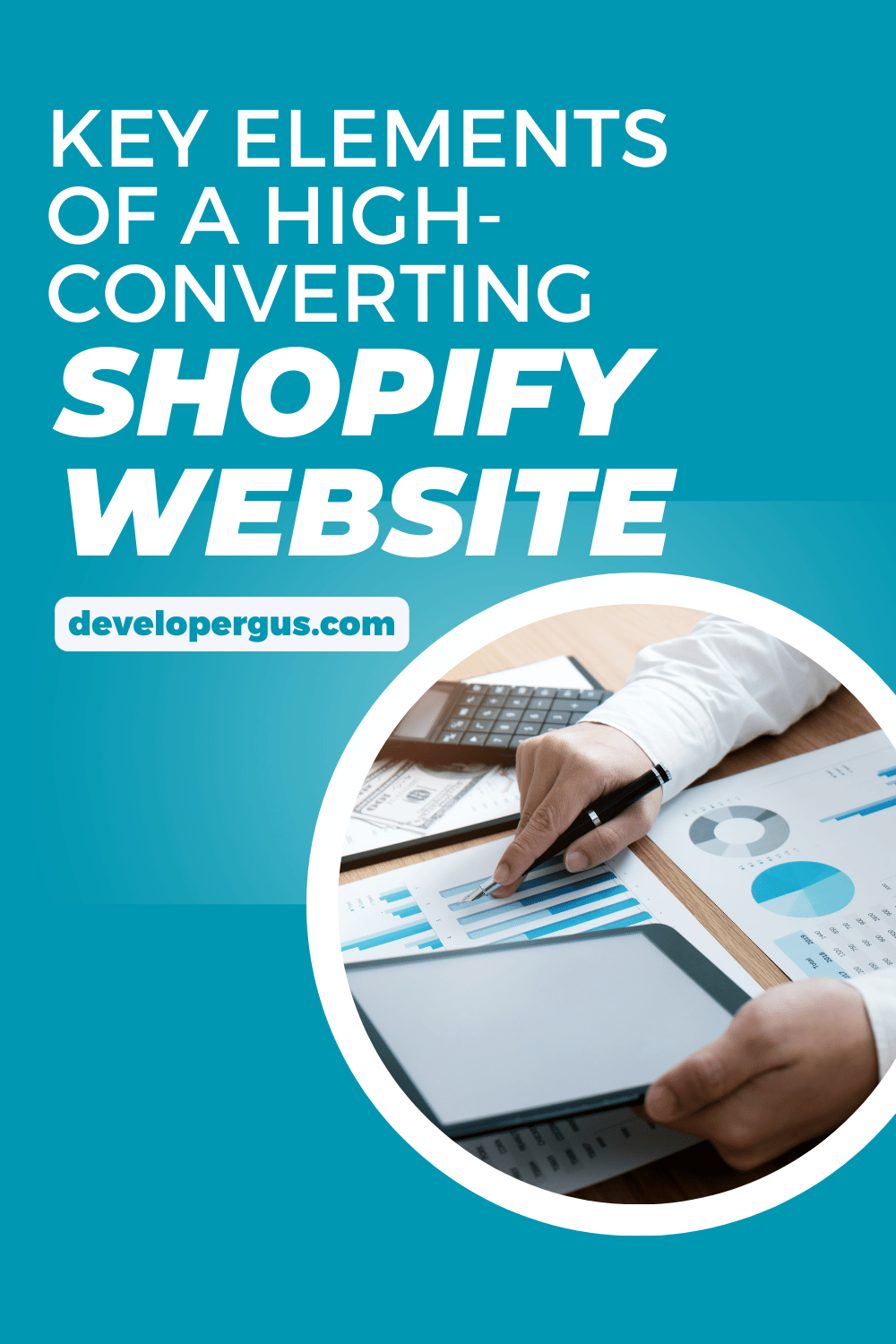As an e-commerce store owner, I know the importance of creating a Shopify website that converts visitors into customers. A well-designed site can make all the difference in your sales and revenue. High-converting product pages focus on understanding and addressing customer concerns, highlighting clear calls to action, and activating live chat on key pages.

I’ve found that optimizing product pages is crucial for success. This involves tweaking specific elements to A/B test different variants and improve performance. Some key strategies include surfacing different versions of your product page to audiences with different intents and making strategic adjustments to increase conversions.
In my experience, conversion rate optimization goes beyond just product pages. It’s important to consider site-wide elements that can boost your overall conversion rate. This includes using clear calls to action, creating a sense of urgency with time-sensitive offers, and ensuring your site is user-friendly across all devices. By implementing these strategies, I’ve seen significant improvements in sales and customer satisfaction.
Visual Design and User Experience
A well-designed Shopify website balances aesthetic appeal with functionality to create an engaging and efficient shopping experience. The following elements work together to enhance visual design and user experience, ultimately driving conversions.
Consistent Branding
I recommend maintaining consistent branding across your Shopify store to build trust and recognition. This includes using a cohesive color scheme that aligns with your brand identity. I suggest selecting 2-3 primary colors and 1-2 accent colors to use throughout your site.
Your logo should be prominently displayed in the header and footer. I advise using consistent typography, with no more than 2-3 complementary fonts for headings and body text. This creates a polished, professional look.
Brand voice and messaging should also remain consistent across all pages and product descriptions. I recommend crafting a clear brand story and values to connect with your target audience emotionally.
Intuitive Navigation
I emphasize the importance of intuitive navigation for a smooth user experience. A well-organized menu structure helps visitors find products quickly. I suggest using descriptive, concise labels for menu items and limiting top-level categories to 5-7 options.
Include a prominent search bar in the header for easy access. Implement filters and sorting options on category pages to help users refine their product searches. I recommend adding breadcrumbs to show users their location within your site hierarchy.
Consider implementing a sticky header with essential navigation elements to improve usability as users scroll. Quick links to the shopping cart and account login should be easily accessible from any page.
Responsive Design
In today’s mobile-first world, I stress the importance of responsive design for your Shopify store. This ensures your site looks great and functions seamlessly across all devices and screen sizes.
I recommend using fluid layouts and flexible images that adapt to different resolutions. Implement touch-friendly elements for mobile users, such as larger buttons and easy-to-tap menu items.
Consider the loading speed on mobile devices by optimizing images and minimizing unnecessary scripts. I suggest using Google’s Mobile-Friendly Test to identify and address any mobile usability issues.
High-Quality Images and Videos
I can’t overstate the importance of high-quality visuals in e-commerce. Professional product photography is crucial for showcasing your items in the best light. I recommend using multiple angles and lifestyle shots to give customers a comprehensive view.
Implement a zoom function for product images to allow closer inspection. Consider adding short product videos or 360-degree views for complex items. This helps customers make informed purchasing decisions.
Optimize image file sizes to maintain fast loading times without sacrificing quality. I suggest using descriptive alt text for all images to improve accessibility and SEO.
Optimized Conversion Funnel
An optimized conversion funnel is crucial for turning visitors into customers on your Shopify website. It guides potential buyers through each stage of the purchase process efficiently and effectively.
Clear Calls to Action
Clear calls to action (CTAs) are essential for directing visitors towards conversion. I recommend using action-oriented language that creates a sense of urgency. For example, “Shop Now” or “Get 20% Off Today” can be more effective than generic phrases like “Click Here.”
The design and placement of CTAs matter too. I suggest using contrasting colors to make buttons stand out and placing them prominently above the fold. A/B testing different CTA variations can help determine which ones resonate best with your audience.
It’s important to use different CTAs for different stages of the funnel. “Learn More” might work well for awareness-stage content, while “Add to Cart” is more appropriate for consideration-stage product pages.
Streamlined Checkout Process
A smooth, hassle-free checkout process is vital for reducing cart abandonment. I recommend minimizing the number of steps required to complete a purchase. Offering guest checkout options can be particularly effective for first-time buyers.
Clear progress indicators help customers understand where they are in the process. I suggest displaying shipping costs upfront to avoid surprises that might cause abandonment.
Mobile optimization is crucial, as many shoppers use smartphones. Ensure form fields are easy to fill on smaller screens. Offering various payment options, including digital wallets, can also boost conversions.
User testing can reveal pain points in your checkout process that may not be immediately apparent.
Trust Signals
Trust signals reassure potential customers about the safety and reliability of your store. I recommend displaying security badges prominently, especially on checkout pages. These can include SSL certificates and trusted payment gateway logos.
Customer reviews and testimonials serve as powerful social proof. Consider integrating a review system that allows verified buyers to rate and comment on products.
Clear return and refund policies can alleviate concerns about making a purchase. I suggest making these easily accessible throughout the site.
Displaying contact information, including a phone number or live chat option, can provide additional reassurance. A professional design and regularly updated content also contribute to a sense of trustworthiness.
Product Presentation
Effective product presentation is crucial for a high-converting Shopify website. I’ll cover two key aspects that can significantly impact your conversion rates: detailed product descriptions and customer reviews and ratings.
Detailed Product Descriptions
I recommend crafting comprehensive product descriptions that go beyond basic features. Highlight the unique selling points and benefits of each item to capture potential buyers’ interest.
Use bullet points to break down key features for easy scanning. Include dimensions, materials, and care instructions when applicable.
Address common customer questions preemptively to reduce hesitation. I suggest incorporating high-quality images and videos to showcase the product from multiple angles.
Consider adding a size guide or comparison chart for products with multiple variations. This helps customers make informed decisions and reduces returns.
Customer Reviews and Ratings
I’ve found that customer reviews and ratings are powerful social proof that can significantly boost conversions. Display an overall star rating prominently near the product title.
Encourage verified buyers to leave detailed reviews. Include photos and videos from real customers to add authenticity.
Highlight both positive and negative reviews to build trust. Respond to negative feedback professionally to show your commitment to customer satisfaction.
Use a filtering system that allows shoppers to sort reviews by rating, date, or relevance. This helps potential buyers find the most helpful information quickly.
Consider featuring selected reviews on your product pages to showcase the best feedback. This can help address common concerns and highlight key benefits.
Technical Performance

Technical performance is crucial for a high-converting Shopify website. It encompasses several key aspects that directly impact user experience and search engine rankings. Let’s explore these critical elements in detail.
Fast Load Times
Fast load times are essential for keeping visitors engaged and reducing bounce rates. I recommend optimizing image sizes and formats to reduce file sizes without compromising quality. Minifying CSS, JavaScript, and HTML files can also significantly improve load times.
Leveraging browser caching allows returning visitors to load your site more quickly. I suggest using a content delivery network (CDN) to serve static assets from servers closer to your users’ geographical locations.
Reducing the number of HTTP requests by combining files and using CSS sprites for images can further enhance load speeds. Regularly monitoring and analyzing your site’s performance using tools like Google PageSpeed Insights helps identify areas for improvement.
Mobile Optimization
Mobile optimization is no longer optional; it’s a necessity. I always ensure that Shopify sites are fully responsive, adapting seamlessly to various screen sizes and devices.
Implementing a mobile-first design approach helps prioritize essential content and features for smaller screens. This includes using legible fonts, appropriately sized buttons, and touch-friendly navigation elements.
Optimizing images for mobile devices by serving appropriately sized versions can significantly improve load times. I also recommend using AMP (Accelerated Mobile Pages) for product pages to enhance mobile performance.
Testing your site across multiple devices and browsers is crucial to ensure a consistent user experience. Pay special attention to mobile checkout processes, making them as streamlined as possible.
SEO Best Practices
Implementing SEO best practices is vital for improving visibility in search engine results. I always start by optimizing page titles, meta descriptions, and header tags (H1, H2, etc.) with relevant keywords.
Creating unique, high-quality content for each product page helps improve rankings and user engagement. I recommend using descriptive URLs that include target keywords and implementing a logical site structure with clear navigation.
Optimizing images with alt text and descriptive file names aids both SEO and accessibility. Implementing structured data markup helps search engines better understand your content and can lead to rich snippets in search results.
Regular content updates and maintaining an active blog can improve search rankings. I also focus on building high-quality backlinks through partnerships and content marketing strategies.








Comments (2642)